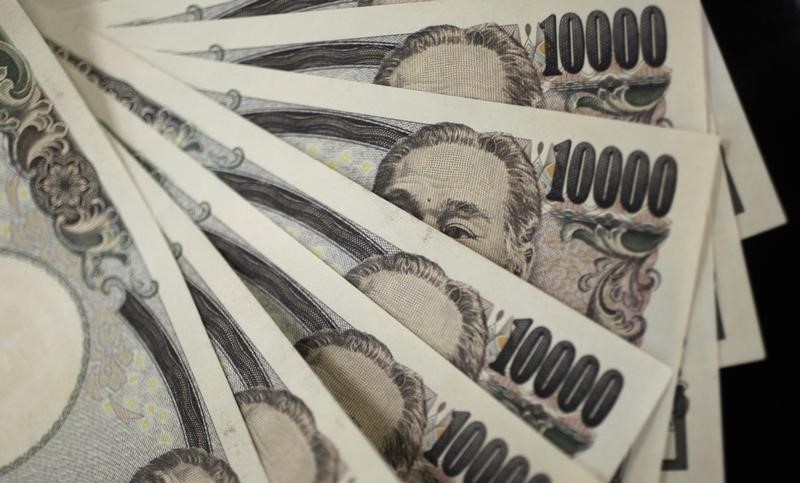Investing.com - The yen gained in early Asia on Thursday ahead of a central bank review of policy, while the Kiwi gained after better than expected GDP data.
USD/JPY changed hands at 105.82, down 0.17%, while NZD/USD rose 0.64% 0.7079. AUD/USD traded at 0.7415, up 0.09%.
In New Zealand, first quarter GDP rose 0.7% quarter-on-quarter, compared to an expected rise of 0.5%, while the year-on-year pace came in at a gain of 2.8%, compared to 2.6% seen.
Ahead in Australia, employment change figures for May are expected to show 15,000 jobs added for an unemployment rate of 5.7%.
Later, the Bank of Japan releases its latest interest rate decision with markets looking for clarity on the scope for further easing measures. There is concern for the BoJ that a delicate economic climate could dampen inflation expectations further and a sharp yen rise could hurt business sentiment.
That should keep the pace of asset purchases at ¥80 trillion annually and the 0.1% negative interest rate on excess reserves unless the yen surges.
On Wednesday afternoon, the Federal Open Market (FOMC), as expected, left the target range of its benchmark Federal Funds Rate unchanged at a level between 0.25 and 0.50%. It marked the fourth consecutive meeting the FOMC held rates steady at their current level since their historic rate hike in December. The FOMC voted unanimously 10-0 to support the monetary policy action. Previously, Kansas City Fed president Esther George served as the lone dissenter at FOMC meetings in March and April.
"The Committee currently expects that, with gradual adjustments in the stance of monetary policy, economic activity will expand at a moderate pace and labor market indicators will strengthen," the FOMC said in the statement. "Inflation is expected to remain low in the near term, in part because of earlier declines in energy prices, but to rise to 2 percent over the medium term as the transitory effects of past declines in energy and import prices dissipate and the labor market strengthens further."
The new projections aren't set in stone, but they do indicate how the views of officials are changing. The Fed doesn't see rates going as high as it saw before, and it sees taking a longer time to get to the endpoint officials have in mind. Markets pushed back expectations for a summer rate hike by the U.S. central bank after a dismal U.S. employment report for May, which showed the slowest rate of jobs growth since September 2010.
The U.S. dollar index, which measures the greenback’s strength against a trade-weighted basket of six major currencies, was last quoted at 94.67.
Overnight, the dollar eased against the other major currencies on Wednesday after the Fed announcement, despite the release of upbeat U.S. data.
The U.S. Commerce Department said producer prices rose by 0.4% last month, against forecasts for the 0.1% increase to remain at the levels seen in April.
The producer price index was down 0.1% from a year earlier, in line with expectations.
Core producer prices, which exclude food and energy, also rose 0.3% last month, above forecasts for a 0.1% increase.
Separately, the New York Federal Reserve said its Empire State manufacturing index rose to 6.01 in June from a reading of -9.02 the previous month. Analysts had expected the index to improve to -4.00 this month.
On a less positive note, another report showed that U.S. industrial production decreased by 0.4% last month, worse than expectations for a decline of 0.2%.
